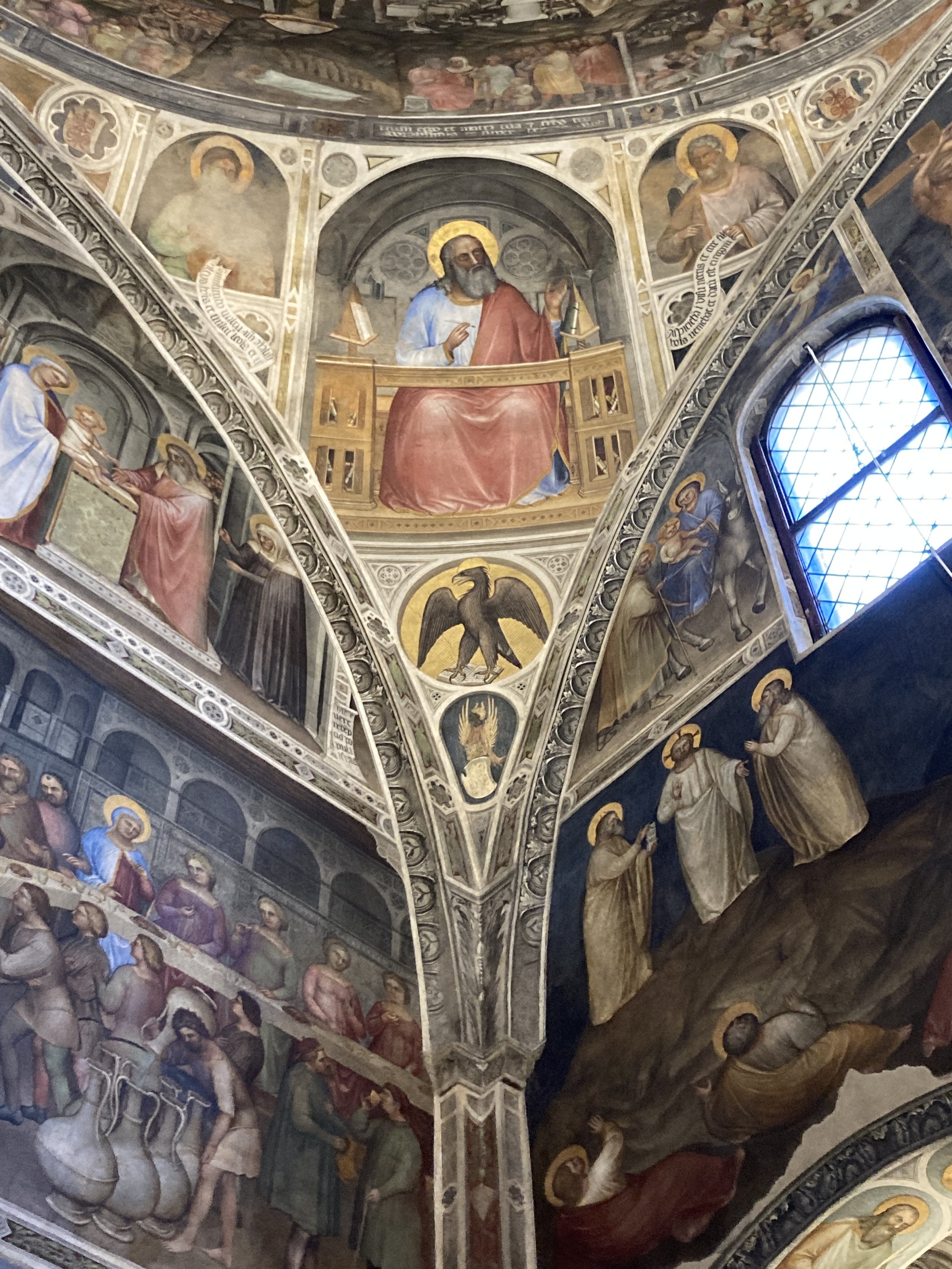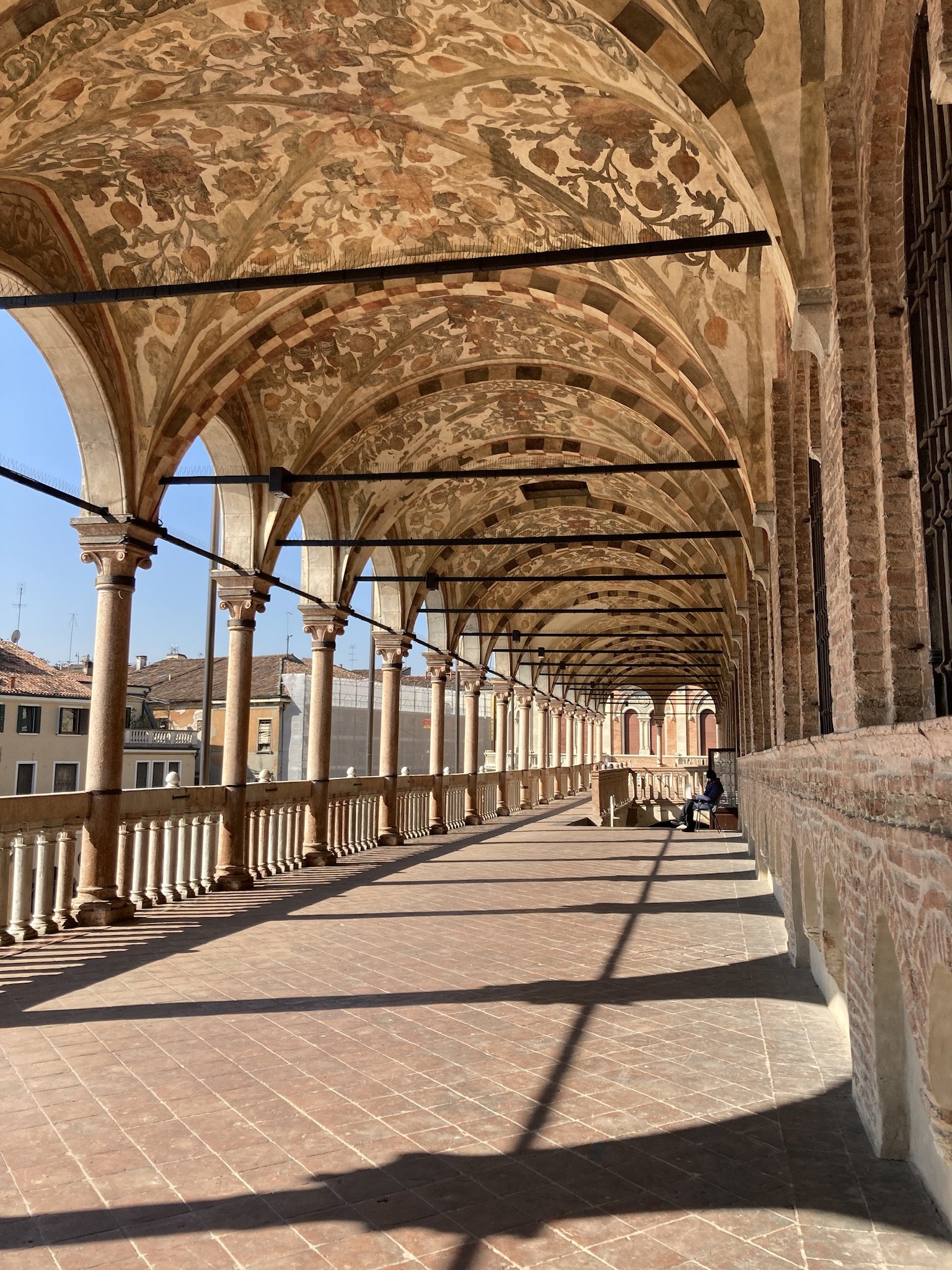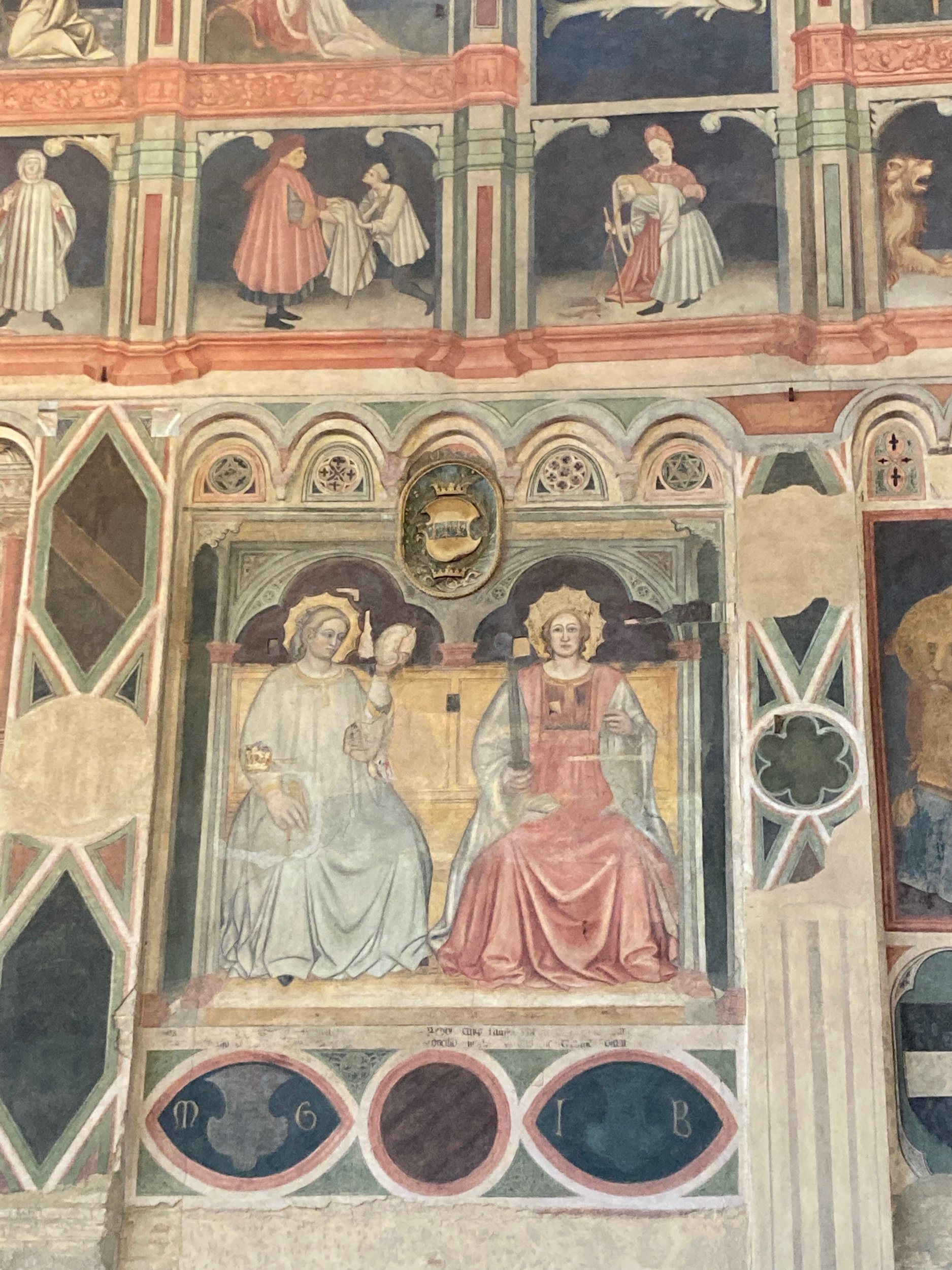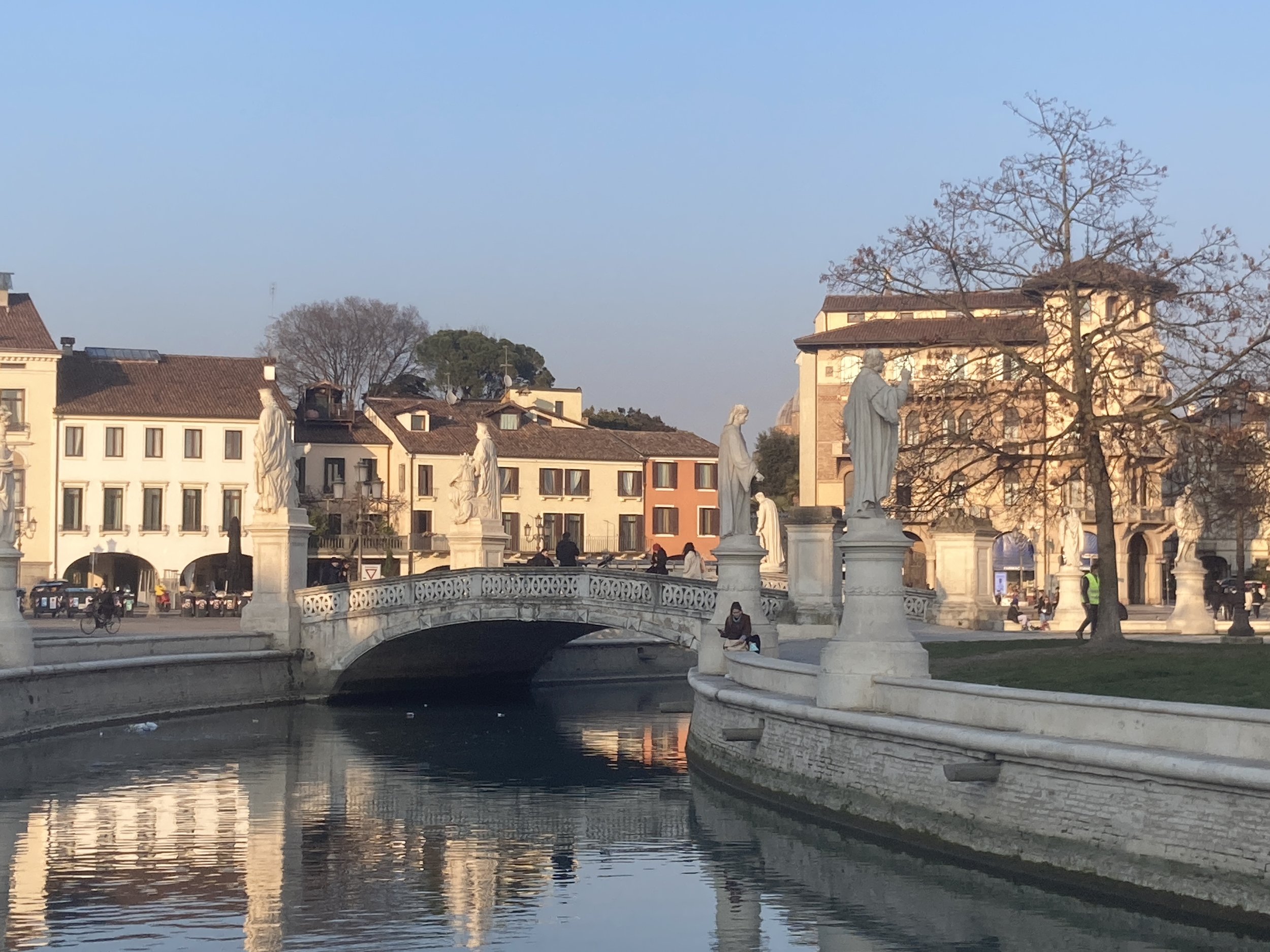An Introduction to Padova: Part Two
Padova is most famous for its churches. Visitors come to admire the small but spectacular Scrovegni Chapel and the even smaller Oratorio of St. George along with Padova’s baptistery. All three are filled with beautiful frescoes that bring Bible stories to life. In contrast to these small spaces is the grand Basilica of Saint Anthony with its Chapel of Reliquaries, tomb, beautiful main altar, and starry blue ceiling.
But Padova offers more than chapels, baptisteries and basilicas. It is definitely worth seeking out the city’s other attractions including markets, historic buildings, piazzas, pedestrian shopping streets, and attractive outdoor spaces. Getting around town is easy both on foot and with a modern tram system.
Here are some other possibilities when spending a few days in Padova:
Looking down on the city and the stalls of the daily market from the loggia of the Palazzo della Ragione, Padova.
The Palazzo della Ragione sits atop the busy food hall and overlooks the markets in Piazza delle Erbe and Piazza della Frutta.
Loggia, Palazzo della Ragione, Padova
In medieval times the Palazzo della Ragione served as the Hall of Justice. Outside is a loggia with beautifully painted arches. Inside the space is cavernous with a wooden “upturned ship’s hull” shaped roof and a gigantic wooden horse. An intriguing series of frescoes, based on astrology, wraps around the interior of the palazzo. The frescoes represent months, planets, and signs of the zodiac. It’s fun to view the seasons in sequence, see how the art reflects the essence of each month, and find how one’s own birth sign is represented.
The pietra del vituperio (stone of shame), where debtors sat before being driven from the city, is still in place at one end of the great hall. History says that Saint Anthony proposed a seat on this stone as an alternative to harsher punishments.
Imagine sitting here in shame as punishment for debts.
Two of the outdoor spaces in Padova, the Prato della Valle and the Orto Botanico (Botanic Gardens), are delightful.
Prato della Valle, Padova
The Prato della Valle is a large open space not far from the Basilica of Saint Anthony. It was once the field in which the saint preached. Today it is the “central park” of Padova. The Prato (which means lawn in Italian) is encircled by a canal which is crossed by small stone footbridges. The park is also dotted with statues and fountains. It’s a pleasant area full of people - mothers pushing prams, couples sitting in the sun, retirees out for a walk, bicyclers and walkers enjoying a stroll.
The Orto Botanico is also close to the Basilica of St. Anthony. It is a large space with a series of gardens, plants from around the world, and educational displays. Founded in the 1500’s as a garden for medicinal plants and herbs, it has been in this very spot ever since. There are fountains to be enjoyed and wonderful views throughout the spaces of the botanic garden.
A visit to Padova, including all of the above places plus some time for shopping and wandering, can easily fill three days. Add in a trip to the central daily market and some great dining and three days fly by. I am looking forward to a future return trip, perhaps combined with a few days in Verona or Venice.



















